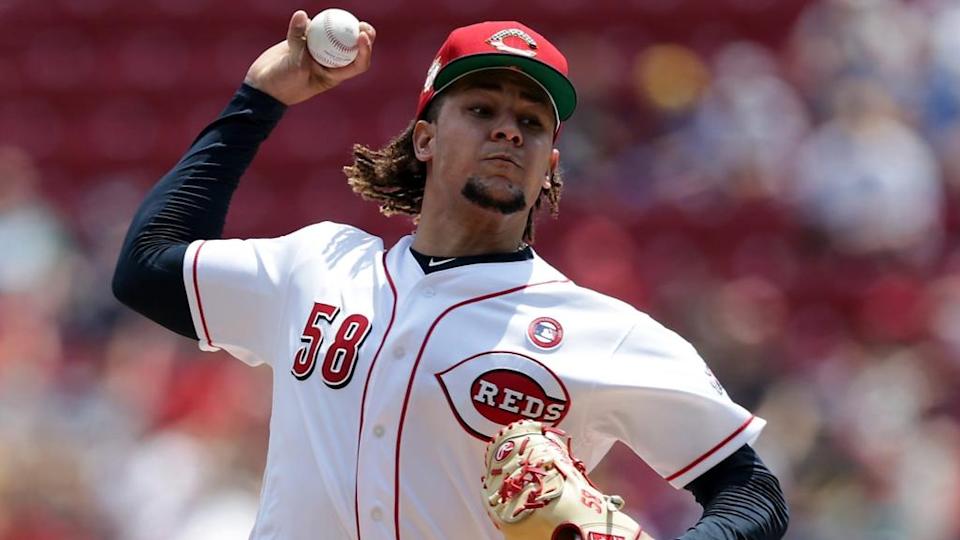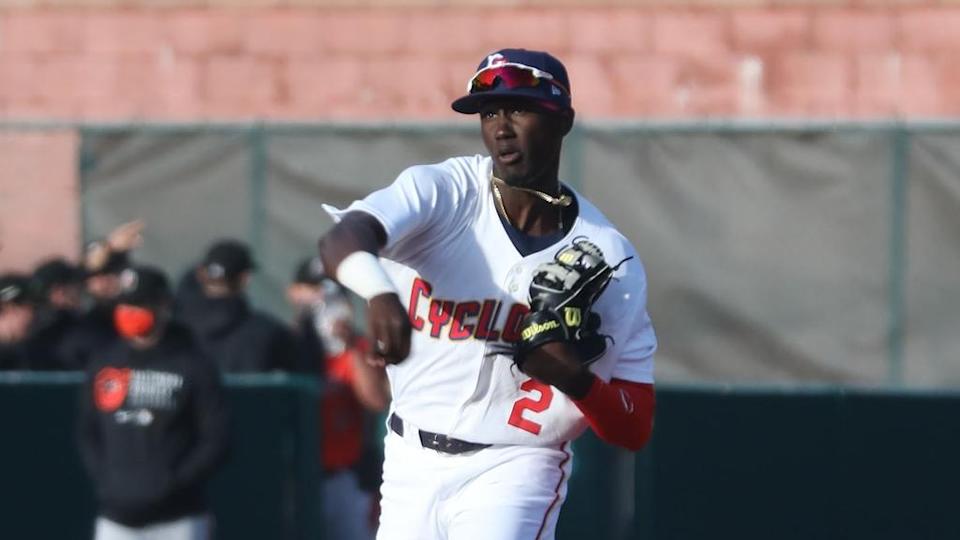
Whenever the MLB lockout ends, the Mets‘ top priority should be filling out their starting rotation by adding a pitcher from outside the organization who can slide in as a reliable but high-upside No. 3 starter behind Jacob deGrom and Max Scherzer.
That option really doesn’t exist on the free agent market, so New York might have to make a trade to get it done.
The Oakland Athletics are expected to be open for business as they enter another period of rebuilding, and one of their starting pitchers — such as Sean Manaea — could make sense for the Mets. But Manaea fits more in the reliable category than he does the high-upside category.
If the Mets are going for upside — and it can be argued that they should be with deGrom’s health still in question — they can turn to the Cincinnati Reds.
The Reds might have visions of contending in the NL Central in 2022, but that hasn’t stopped Luis Castillo‘s name from being out there in trade rumors.
And if the Reds deal Castillo this offseason, they can likely get a haul. If they wait until the trade deadline or next offseason, that haul will be sliced. And if they don’t trade Castillo at all, they will very likely lose him for nothing (or perhaps get a compensatory draft pick, depending on how the new CBA shakes out) when he hits free agency after the 2023 season.
When attempting to figure out what it could take to pry Castillo from the Reds, the package the Minnesota Twins got from the Toronto Blue Jays for Jose Berrios during the 2021 trade deadline could be instructive.
The 27-year-old Berrios, like Castillo, is a high-upside right-hander. In six seasons with the Twins, Berrios had a 4.04 ERA (3.95 FIP) and 1.22 WHIP while striking out 9.1 per 9 in 851.2 innings.
Castillo, who is about a year and a half older than Berrios, has a 3.72 ERA (3.76 FIP) and 1.22 WHIP (identical to what Berrios’ was in Minnesota) and has struck out 9.2 per 9 in 707.1 innings in five seasons with the Reds.


Both Berrios and Castillo have averaged 196 innings pitched per 162 games during their big league career.
As far as salary and years of control, Castillo is set to earn roughly $7.5 million in 2022 in what is his second-to-last year of arbitration. Berrios made roughly $5.6 million in 2021 and signed a seven-year extension worth $131 million this past November, with Toronto inking him a year before he was set to hit the open market.
So if the Reds deal Castillo now, the acquiring team will be getting two full years of team control instead of the one year and two-plus months the Jays got for Berrios.
When trading for Berrios, the Blue Jays (in what was viewed by some as a bit of an overpay) gave up two top prospects — SS/OF Austin Martin and RHP Simeon Woods Richardson.
At the time of the trade, Martin was the Blue Jays’ No. 2 prospect per MLB Pipeline and Woods Richardson was ranked No. 4. Entering the 2022 season, Martin is ranked No. 36 on the MLB Pipeline Top 100, while Woods Richardson is not ranked. However, Woods Richardson — who had a terrible 2021 — was ranked No. 68 at the time of the trade.
While the Blue Jays’ farm system is viewed as being better overall than the Mets (they were ranked No. 14 after the trade, while the Mets were No. 22), the Mets have four Top 100-ish prospects, meaning they should have more than enough to deal for Castillo — if they choose to.


But every team has different needs and different preferences.
For example, one team could be incredibly high on some of the Mets’ top prospects while another potential trade partner might not be enamored. There’s also the question of positional fit.
If the Reds decide to trade Castillo this offseason, a reasonable ask would be one top prospect who is also a top 100 prospect in baseball, and one other prospect inside a team’s top 10.
For the Mets, Francisco Alvarez and Brett Baty will be off-limits in pretty much any trade. So inquiring teams can forget those two.
That means that for Castillo, a fair offer from the Mets could be SS Ronny Mauricio (ranked No. 3 on SNY’s Top 20 Mets prospects list and No. 53 on the MLB Pipeline Top 100) and RHP J.T. Ginn (ranked No. 5 on SNY’s Top 20). And the Mets would need to sign Castillo to an extension to make that deal worthwhile.


One issue with the above could be the fact that the Reds have highly thought of SS prospect Matt McLain, who could make his MLB debut in 2023. But Mauricio might wind up at third base or second base long-term.
If the Reds are seeking an outfield prospect or first base prospect who’s close to the majors in any deal for Castillo, the Mets might not be a fit as a trade partner.
But if Cincinnati is intrigued by Mauricio and the Mets are willing to deal him and possibly Ginn in the right package, there could be a fit. And when it comes to the Mets’ thinking, they will likely have six picks in the top 100 of the 2022 MLB Draft, giving them a chance to seriously replenish their farm system.
To be clear, the Mets should not be looking to trade Mauricio or Ginn or any of their top prospects. But Mauricio is not nearly as untouchable as Alvarez or Baty, and it can be argued that Mark Vientos (who is on the doorstep of the majors and could profile as a DH) might be a better fit for the Mets as presently constructed than Mauricio.
Francisco Lindor will be at shortstop for the next decade, Pete Alonso is entrenched at first base, and third base likely has Baty’s name on it. That means that Mauricio’s fit with the Mets is probably at second base.
Again, there is nothing wrong with keeping a potentially dynamic player like Mauricio and putting him at second or keeping a possible rotation cog like Ginn. But if the Mets want to deal for an impact starting pitcher, Mauricio makes more sense than any other prospect as the one to dangle as the centerpiece.
